Résultats de recherche de titre
Articles 1500981 à 1501000 sur 1502008
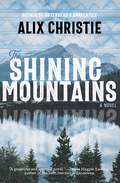
The Shining Mountains: A Novel
Par Alix Christie. 2023
The year is 1838. A young Scotsman forced from his homeland arrives at Hudson&’s Bay. Angus McDonald is contracted to…
British masters to trade for fur. But the world he discovers is beyond even a Highlander&’s wildest imaginings: raging rivers, buffalo hunts, and the powerful daughter of an ancient and magnificent people. In Catherine Baptiste, kin to Nez Perce chiefs, Angus recognizes a kindred spirit. The Rocky Mountain West in which they meet will soon be torn apart by competing claims: between British fur traders, American settlers, and the Native peoples who have lived for millennia in the valleys and plateaus of the Shining Mountains&’ western slopes.In this epic family saga, the real history of the American West is revealed in all its terror, beauty, and complexity. The Shining Mountains brilliantly limns a world now long forgotten: of blended cultures seeking allies, trading furs for guns and steel, and a way of life in collision with westward colonial expansion.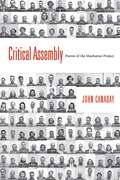
Critical Assembly: Poems of the Manhattan Project (Mary Burritt Christiansen Poetry Series)
Par John Canaday. 2017
With technical mastery and remarkable empathy, Canaday introduces readers to the people involved in the creation and testing of the…
first atomic bomb, from initial theoretical conversations to the secretive work at Los Alamos. Critical Assembly also includes brief biographies, notes, and a bibliography for further exploration about this critical event in world history.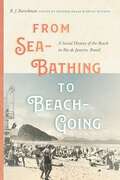
2023 Honorable Mention, Warren Dean Prize in Brazilian HistoryIn From Sea-Bathing to Beach-Going B. J. Barickman explores how a narrow…
ocean beachfront neighborhood and the distinctive practice of beach-going invented by its residents in the early twentieth century came to symbolize a city and a nation. Nineteenth-century Cariocas (residents of Rio) ostensibly practiced sea-bathing for its therapeutic benefits, but the bathing platforms near the city center and the rocky bay shore of Flamengo also provided places to see and be seen. Sea-bathing gave way to beach-going and sun-tanning in the new beachfront neighborhood of Copacabana in the 1920s. This study reveals the social and cultural implications of this transformation and highlights the distinctive changes to urban living that took place in the Brazilian capital. Deeply informed by scholarship about race, class, and gender, as well as civilization and modernity, space, the body, and the role of the state in shaping urban development, this work provides a major contribution to the social and cultural history of Rio de Janeiro and to the history of leisure.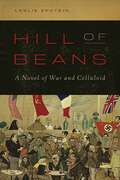
Hill of Beans: A Novel of War and Celluloid
Par Leslie Epstein. 2021
The film Casablanca opens with the words, &“With the coming of the Second World War, many eyes in imprisoned Europe…
turned hopefully, or desperately, toward the freedom of the Americas.&” Leslie Epstein&’s Hill of Beans is the story of how one nation, one industry, and in particular one man responded to that desperate hope. That man is Jack Warner. His impossible goal is to make world events—most importantly, the invasion of North Africa by British and American forces in 1942—coincide with the release of his new film about a group of refugees marooned in Morocco. Arrayed against him are Stalin and Hitler, as well as Josef Goebbels, Franklin Roosevelt, a powerful gossip columnist, and above all a beautiful young woman with a terrible secret. His only weapons are his hutzpah and his heroism as he struggles to bring cinema and city, conflict and conference together in an epic command performance.Hill of Beans is the novel that Leslie Epstein—the son and nephew of Philip and Julius Epstein, the screenwriters of Casablanca—was born to write.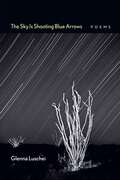
The Sky Is Shooting Blue Arrows: Poems (Mary Burritt Christiansen Poetry Series)
Par Glenna Luschei. 2016
In this new book Glenna Luschei&’s poems take her and her readers around the world, including to Tunisia and Colombia,…
but in the end they return to center on the American West, where her heart lies. Celebrating life, travel, aging, and nature, this new book shines with Luschei&’s view of the world.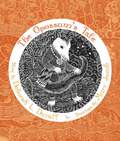
The Opossum's Tale (The Grandmother Stories)
Par Deborah L. Duvall. 2005
Have you ever seen an opossum, hurrying across the road with its eyes and coat shining in your headlights? Or…
hanging upside down from a tree? Or lying on the ground 'playing possum' as if dead? And did you ever wonder why the opossum acts this way? The ancient Cherokee people wondered about the opossum, whose silly grin and hairless tail caught their imagination. In those days, the people had no written language, and they relied on stories to explain the behavior of the animals in their world. According to Cherokee legend, the Opossum owned a magnificent tail, covered in glistening fur, of which he was terribly proud. The tail was so magnificent, in fact, that the Opossum thought it his duty to make everyone else appreciate it as well. In this seventh volume of the Grandmother Stories, Si-qua the Opossum brags constantly about his tail until his neighbors can stand it no more. Something must be done about him! The prideful Si-qua is overcome by loss and despair when his outer beauty is suddenly gone. But an unexpected ally helps Si-qua discover powerful abilities within himself that will soon win the true admiration of his friends. Visit the authors' website at www.jacobandduvall.com.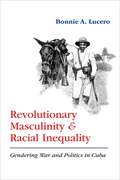
Revolutionary Masculinity and Racial Inequality: Gendering War and Politics in Cuba
Par Bonnie A. Lucero. 2021
One of the most paradoxical aspects of Cuban history is the coexistence of national myths of racial harmony with lived…
experiences of racial inequality. Here a historian addresses this issue by examining the ways soldiers and politicians coded their discussions of race in ideas of masculinity during Cuba&’s transition from colony to republic. Cuban insurgents, the author shows, rarely mentioned race outright. Instead, they often expressed their attitudes toward racial hierarchy through distinctly gendered language—revolutionary masculinity.By examining the relationship between historical experiences of race and discourses of masculinity, Lucero advances understandings about how racial exclusion functioned in a supposedly raceless society. Revolutionary masculinity, she shows, outwardly reinforced the centrality of color blindness to Cuban ideals of manhood at the same time as it perpetuated exclusion of Cubans of African descent from positions of authority.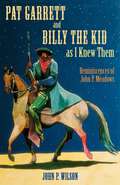
Pat Garrett and Billy the Kid as I Knew Them: Reminiscences of John P. Meadows
Par John P. Wilson. 2004
Cowboy, army guide, farmer, peace officer, and character in his own right, John P. Meadows arrived in New Mexico from…
Texas as a young man. During his life in the Southwest, he knew or worked for many well-known characters, including William &“Billy the Kid&” Bonney, Sheriff Pat Garrett, John Selman, Hugh Beckwith, Charlie Siringo, and Pat Coghlan. Meadows helped investigate the disappearance of Colonel Albert Jennings Fountain, and he later bought part of downtown Tularosa, New Mexico, where he served a term as mayor.The recollections gathered here are based on Meadows&’s interviews with a reporter for the Alamogordo News, a partial transcript of his reminiscences given at the Lincoln State Monument, and a talk he gave by invitation in Roswell, New Mexico, to refute inaccuracies in the 1930 MGM movie Billy the Kid.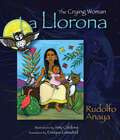
La Llorona: The Crying Woman
Par Rudolfo Anaya. 2011
La Llorona, the Crying Woman, is the legendary creature who haunts rivers, lakes, and lonely roads. Said to seek out…
children who disobey their parents, she has become a boogeyman, terrorizing the imaginations of New Mexican children and inspiring them to behave. But there are other lessons her tragic history can demonstrate for children. In Rudolfo Anaya's version Maya, a young woman in ancient Mexico, loses her children to Father Time's cunning. This tragic and informative story serves as an accessible message of mortality for children. La Llorona, deftly translated by Enrique Lamadrid, is familiar and newly informative, while Amy Córdova's rich illustrations illuminate the story. The legend as retold by Anaya, a man as integral to southwest tradition as La Llorona herself, is storytelling anchored in a very human experience. His book helps parents explain to children the reality of death and the loss of loved ones.
The Shadowgraph: Poems (Mary Burritt Christiansen Poetry Series)
Par James Cihlar. 2020
In The Shadowgraph James Cihlar explores the ways images, performances, and memories shape and inform LGBTQ+ identity. Golden-age Hollywood cinema—in…
particular the career of fiercely independent actress Barbara Stanwyck—provides the screen on which Cihlar projects characters and stories bravely, even defiantly, performed. Cihlar&’s commentary on individual films—as well as on human experience and desire—is intense, smart, and right on target.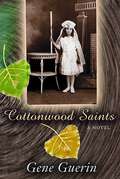
Cottonwood Saints
Par Gene Guerin. 2005
Spanning the twentieth century, Cottonwood Saints chronicles the lives of a New Mexico woman and her son, Michael. Margarita Juana…
Galvan was born in a lumber camp in 1913 and is brought up like a little princess in her grandparents' hacienda. In contrast, Margarita's adult life is spent in depression-ridden Las Vegas, New Mexico. Told through Michael, Margarita's story embodies the challenges faced by an intelligent, independent-minded girl maturing in a man's world. Margarita and her family's lives intersect with the prominent events of the century: the influenza pandemic of 1918, the rise of the Ku Klux Klan, the Great Depression, and World War II. Based on the life of Guerin's mother, Cottonwood Saints connects the lives of the poorest citizens of New Mexico to the local power structure. The story ends after Michael, who became a priest, must leave his order in disgrace, and with the burial of Margarita in 1991. Cottonwood Saints is a moving family saga, rich in lore and personality and the marvelous culture of New Mexico. Margarita Juana is a powerful woman, a survivor who perseveres against all odds, determined to hold things together. Her story, about the extreme courage of ordinary people, is sad and true and very inspiring.--John Nichols, author of The Milagro Beanfield WarThe lyrical voice will draw you in, but it's Margarita Juana's twentieth-century--spanning story that will keep you reading. Cottonwood Saints paints a northern New Mexico on the brink of change its characters both embrace and fear. Cottonwood Saints is quietly lovely, heartbreakingly real.--Lisa Lenard-Cook, author of Dissonance and Coyote MorningWith poetic descriptions of countryside and towns struggling to be modern, we are taken through the late nineteenth century in Las Vegas, New Mexico, in its growing pains as a railroad town, the hardships of World War II both for those who participated in the Baatan march and those who stayed behind, to the contemporary period. Guerin has exactly captured a period from rural life to contemporary life, with all its disappointments and challenges.--Tey Diana Rebolledo, department of Spanish, University of New Mexico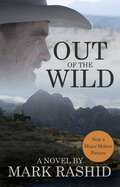
Out of the Wild
Par Mark Rashid. 2016
One dark, vacant, Nevada night cattle rancher Henry McBride closes his eyes, only to open them and find his life…
suddenly in shambles, with everything that means anything lost to him forever. Overwhelmed by grief and haunted by guilt, Henry drives away from his past as far and as fast as he can. Jobs, towns, and whiskey come and go. He always tells himself he'll stay just long enough to earn the money he needs to buy his next drink, somewhere else on down the road.But guest ranch owner Jessie King extends an open and forgiving hand to the cowboy, and the arrival of a young mustang stallion—also wounded and alone—ignites a flicker of recognition in Henry. Like him…broken. With Jessie's powerful ability to connect with horses, and her gentle attempts to connect with Henry, time slows enough on the ranch to heal, just a little. But Jessie, too, has an imperfect past, and when her former ranch manager returns with murder in mind, the fragile world she, Henry, and the stallion are building together threatens to come crashing down.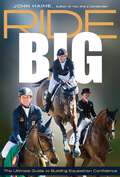
Ride Big
Par John Haime. 2021
An easy-to-implement framework proven to grow rider confidence, tested by the world&’s leading equestrian athletes.Without confidence, achievement in competition is…
unattainable. When confidence is lacking in any sport, equestrian included, chances are your career will be short. Renowned performance coach John Haime has written the book to counter this challenge, providing the mental tools riders need to be better under pressure of all kinds and consistently succeed.Equestrian sport is a partnership: there&’s an equine athlete, and there&’s a human athlete. Haime notes that often, there is an investment in world-class training for one partner (the horse), but not the other (the human). This compromises the potential effectiveness of the horse-and-rider team. It justmakes sensefor equestrians to develop their own skills—mental and physical—and bring more to the partnership.Haime explains that there is what he believes is a crisis of confidence in modern equestrian sport. This has a variety of causes, including: a lack of fundamental mental/emotional structure and development, the presence and prominence of technology in the rider&’s life, and the constant comparisons inherent in social media and a technically &“connected&” existence. Addressing this crisis enables equestrians of all ages and abilities to: communicate better with their horses, both in day-to-day interactions and competition; absorb more in valuable learning situations, such as lessons and clinics; and perform their best when the stakes are high, as when heading into the jump-off or approaching the last fence on the cross-country course.Haime invites readers to dive into three clear and informative areas of exploration:The Confidence Building Blocks:Firm up the fundamentals.The Confidence Builders:Systems and tips to help you build confidence.The Confidence Threats:An inside look at what to watch out for in riding and in competition.Throughout, those who have reached the highest levels on horseback in a number of disciplines share their stories, including Michael Jung, Beezie Madden, McLain Ward, Laura Tomlinson, Harry Meade, Oliver Townend, Mattias Tromp, Casey Deary, Beth Underhill, Fred Mannix, Jared Zenni, Jonathon Millar, and Kelly Soleau-Millar. These Olympians, champions, and medalists explain what they do in the saddle and how their techniques for performing under world-class pressure might help other riders develop a similar kind of confidence. Perhaps even more valuable are the struggles these top competitors share, giving readers the rare opportunity to see how even &“the best of the best&” are human, too.The way riders develop confidence in their equestrian lives is transferable toeverythingthey do: a confident rider can be a confident business person, confident worker, confident spouse, confident parent, and confident friend. In this way,Ride Big!™instills a skill of worth and promise that extends far beyond the show ring.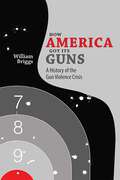
How America Got Its Guns: A History of the Gun Violence Crisis
Par William Briggs. 2017
In the United States more than thirty thousand deaths each year can be attributed to firearms. This book on the…
history of guns in America examines the Second Amendment and the laws and court cases it has spawned. The author&’s thorough and objective account shows the complexities of the issue, which are so often reduced to bumper-sticker slogans, and suggests ways in which gun violence in this country can be reduced.Briggs profiles not only protagonists in the national gun debate but also ordinary people, showing the ways guns have become part of the lives of many Americans. Among them are gays and lesbians, women, competitive trapshooters, people in the gun-rights and gun-control trenches, the NRA&’s first female president, and the most successful gunsmith in American history.Balanced and painstakingly unbiased, Briggs&’s account provides the background needed to follow gun politics in America and to understand the gun culture in which we are likely to live for the foreseeable future.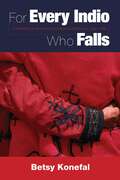
For Every Indio Who Falls: A History of Maya Activism in Guatemala, 1960-1990
Par Betsy Konefal. 2010
In 1978, a Maya community queen stood on a stage to protest a massacre of indigenous campesinos at the hands…
of the Guatemalan state. She spoke graphically to the dead and to the living alike: Brothers of Panzós, your blood is in our throats!Given the context, her message might come as a surprise. A revolutionary insurgency in the late 1970s was being met by brutal state efforts to defeat it, efforts directed not only at the guerrilla armies but also at reform movements of all kinds. Yet the young woman was just one of many Mayas across the highlands voicing demands for change. Over the course of the 1970s, Mayas argued for economic, cultural, and political justice for the indigenous pueblo. Many became radicalized by state violence against Maya communities that soon reached the level of genocide.Scholars have disagreed about Maya participation in Guatemala's civil war, and the development of oppositional activism by Mayas during the war is poorly understood. Betsy Konefal explores this history in detail, examining the roots and diversity of Maya organizing and its place in the unfolding conflict. She traces debates about ethnicity, class, and revolution, and examines how (some) Mayas became involved in opposition to a repressive state. She looks closely at the development of connections between cultural events like queen pageants and more radical demands for change, and follows the uneasy relationships that developed between Maya revolutionaries and their Ladino counterparts. Konefal makes it clear that activist Mayas were not bystanders in the transformations that preceded and accompanied Guatemala's civil war--activism by Mayas helped shape the war, and the war shaped Maya activism.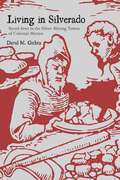
Living in Silverado: Secret Jews in the Silver Mining Towns of Colonial Mexico
Par David M. Gitlitz. 2019
In this thoroughly researched work, David M. Gitlitz traces the lives and fortunes of three clusters of sixteenth-century crypto-Jews in…
Mexico&’s silver mining towns. Previous studies of sixteenth-century Mexican crypto-Jews focus on the merchant community centered in Mexico City, but here Gitlitz looks beyond Mexico&’s major population center to explore how clandestine religious communities were established in the reales, the hinterland mining camps, and how they differed from those of the capital in their struggles to retain their Jewish identity in a world dominated economically by silver and religiously by the Catholic Church.In Living in Silverado Gitlitz paints an unusually vivid portrait of the lives of Mexico&’s early settlers. Unlike traditional scholarship that has focused mainly on macro issues of the silver boom, Gitlitz closely analyzes the complex workings of the haciendas that mined and refined silver, and in doing so he provides a wonderfully detailed sense of the daily experiences of Mexico&’s early secret Jews.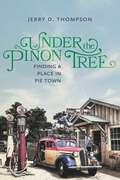
Under the Piñon Tree: Finding a Place in Pie Town
Par Jerry D. Thompson. 2023
Winner of the Historical Society of New Mexico Fabiola Cabeza de Vaca Award Raised in Catron County around Pie Town,…
Jerry D. Thompson is a well-known Southwestern and Civil War historian. Part regional history, part family history, and part childhood memories, Under the Piñon Tree traces the lives of Catron County residents and explores how the area has grown and changed since the Depression and World War II, when Thompson&’s family first homesteaded the area. Those interested in storytelling and history will enjoy this richly detailed account. Under the Piñon Tree is a must-read for anyone interested in New Mexico and the Southwest.
Horse Profiling: The Secret to Motivating Equine Athletes
Par Kerry Thomas. 2012
The Thomas Herding Technique is thoroughly explained in this book that helps trainers of top equine athletes get them to…
perform their very best while living happy, contented lives. While following wild horse herds in Wyoming and Montana, independent researcher Kerry Thomas realized that what is inside the horse (emotional conformation) and not what is outside (how a horse is built, or its physical conformation) is what governs herd dynamics. He determined that this was the basis for everything horse: whatever role a horse plays in a human environment-whatever breed, sport, or job-the emotional conformation dictates, in large part, success or failure. Thomas identified a system of emotional profiling-the Thomas Herding Technique-that enables him to determine a horse's performance tendencies, and then began to develop ways in which horses can be mentally conditioned toward a given goal. The technique is already used by some leading racehorse training and breeding programs in the world, and this book explains this unique way of analyzing the psyche of the equine athlete for all horses, and particularly those in competitive careers where performance is a primary focus--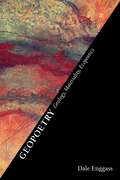
At its core, geopoetics proposes that a connection between language and geology has become a significant development in post–World War…
II poetics. In Geopoetry, Dale Enggass argues that certain literary works enact geologic processes, such as erosion and deposition, and thereby suggest that language itself is a geologic––and not a solely human-based––process. Elements of language extend past human control and open onto an inhuman dimension, which raises the question of how literary works approach the representation of nonhuman realms. Enggass examines the work of Clark Coolidge, Robert Smithson, Ed Dorn, Maggie O&’Sullivan, Jeremy Prynne, Jen Bervin, Christian Bök, and Steve McCaffery, and he finds that while many of these authors are not traditionally connected to ecocritical writing, their innovations are central to ecocritical concerns. In treating language as a geological material, these authors interrogate the boundary between human and nonhuman realms and offer a model for a complex literary engagement with the Anthropocene.
Give Your Horse a Chance
Par Lt Col D'Endrody. 1999
Many masters of horsemanship have studied horses and riding over the last centuries, but few have given the subject greater…
consideration than Agoston d'Endrödy. In preparing this book, he gave considerable thought to the practical principles of riding and to the process of becoming a good rider. And he explains why horses perform more or less successfully according to whether they are mounted by a talented rider or by one of limited natural abilities. InGive Your Horse a Chance, his goal is to reduce the disparity between these two divisions of riders by carefully delineating the processes of good riding and training.The first part of the book explains the proper development of horse and rider so that both learn to enjoy their work. The latter part offers excellent, concise training advice for combined training and show jumping.